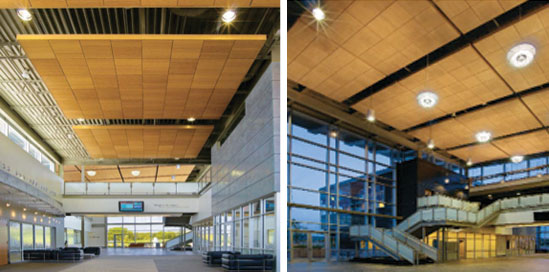A New World of Acoustics
Conclusion
Acoustics has become a rather well understood aspect of building design in terms of defining desirable sound conditions and how to measure and address concerns. Manufacturers of acoustical building products have used this information to understand that one design does not fit all conditions, but rather they offer a full range of visually and acoustically appropriate products to suit a wide range of design needs. Therefore, it is now easier and more needed than ever to take time during the design process to consider acoustical needs in all buildings. The multiple options available readily puts the architect in control of the level of acoustic performance in ceilings and entire spaces. At the same time, the visual appearance of these ceilings and spaces can be used to integrate with and enhance virtually any design.
 |
Armstrong is a leader in the design and manufacture of commercial ceilings with the broadest portfolio of standard and custom options available including mineral fiber/fiberglass, wood, metal, and translucent materials. Armstrong offers innovative interior solutions that help to enhance comfort, save time, improve building efficiency and overall performance, and create beautiful spaces, from Dubai to Shanghai, New York to Sao Paolo. |











